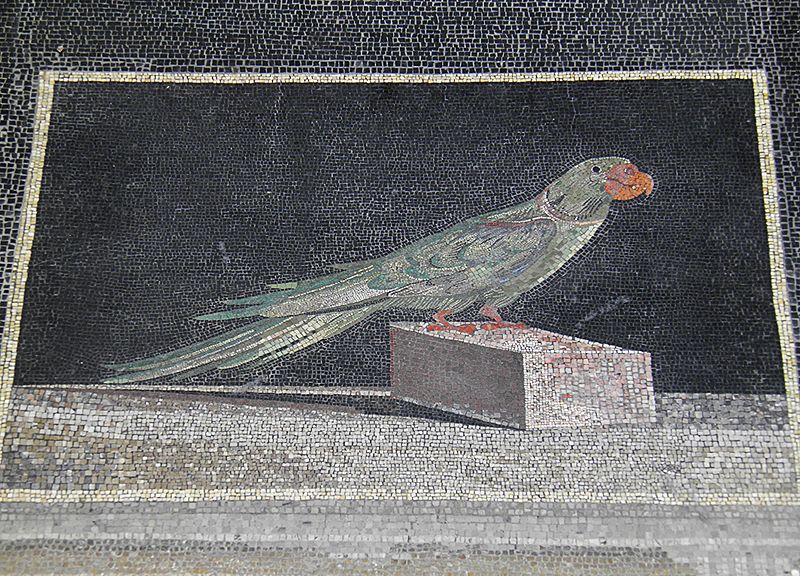Image: Hellenistic mosaic floor panel of an Alexandrine parakeet from Pergamon, 2nd century BC, Pergamon Museum (8408107096)

Description: The species Alexandrine parakeet or Alexandrian parrot (scientific name Psittacula eupatria, noble fatherland or of noble ancestry) is named after Alexander the Great, who is said to have first sent several of the birds from the Punjab to the west, where they became popular as exotic pets of rich and noble families. The Hellenistic mosaic floor panel, made in Pergamon around the middle of the 2nd century BC (the time of Eumenes II and Attalus II), was taken from the "altar room" of Palace V of the Pergamon Acropolis. The type of mosaic found in some of Pergamon's ancient buildings is known as opus vermiculatum (Latin, worm-like work), a technique invented in Greece, in which images are made of rows of coloured tesserae (small cube-shaped pieces of stone, and later also of glass). The subtle colouring of the mosaics imitated painting. Individual motifs, including mythical figures, animals and plants were surrounded by dark tesserae, which highlight the vibrant colours. Often, outlines marked by rows of tessarae were used as contours or to further heighten the pictorial effect, as in drawing. This mosaic artist has used only colour and tone for his subject in a painterly manner, resembling trompe l'oeil realism.
Title: Hellenistic mosaic floor panel of an Alexandrine parakeet from Pergamon, 2nd century BC, Pergamon Museum (8408107096)
Credit: Hellenistic mosaic floor panel of an Alexandrine parakeet from Pergamon, 2nd century BC, Pergamon Museum Uploaded by Marcus Cyron
Author: Carole Raddato from FRANKFURT, Germany
Usage Terms: Creative Commons Attribution-Share Alike 2.0
License: CC BY-SA 2.0
License Link: https://creativecommons.org/licenses/by-sa/2.0
Attribution Required?: Yes
Image usage
The following 2 pages link to this image:

